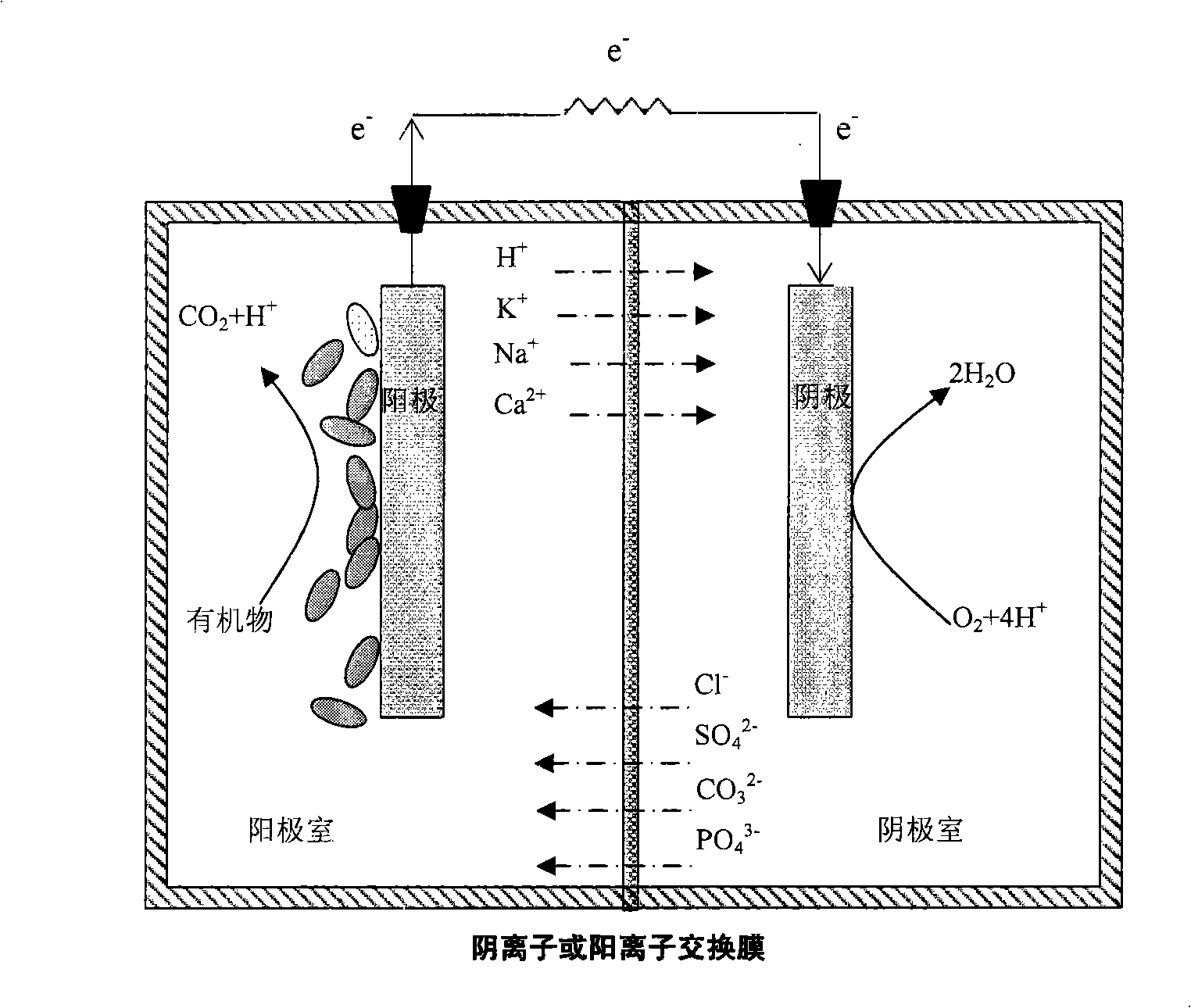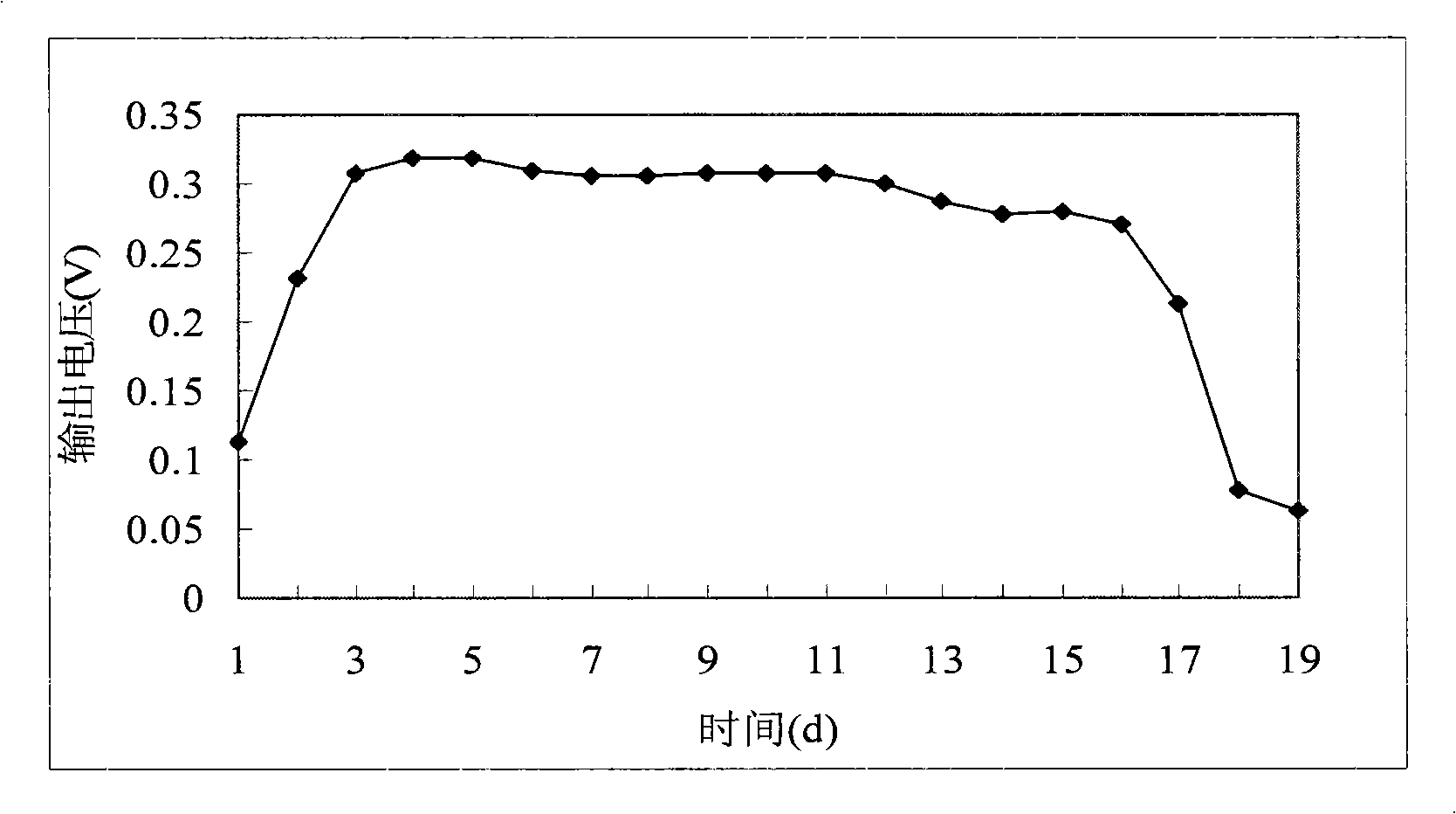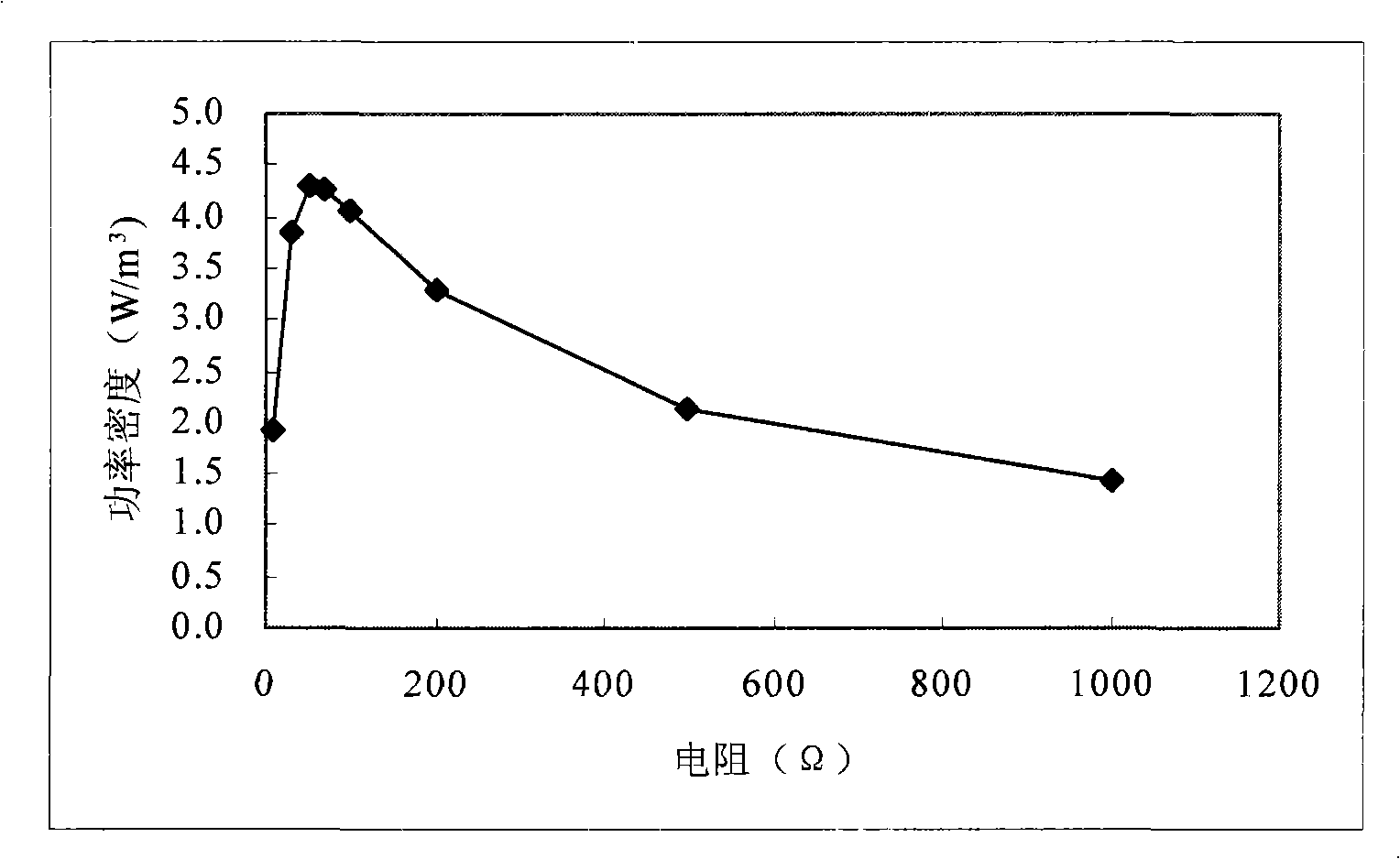A microbe fuel battery and its application
A fuel cell and microbial technology, applied in biochemical fuel cells, fuel cell components, biological water/sewage treatment, etc., can solve the problems of poor mechanical strength, low-cost membrane materials restricting MFC, and restricting the widespread application of microbial fuel cells, etc. problems, achieve high output power and power generation performance, and reduce costs
- Summary
- Abstract
- Description
- Claims
- Application Information
AI Technical Summary
Problems solved by technology
Method used
Image
Examples
Embodiment 1
[0037] Embodiment 1 uses the schematic diagram of the microbial fuel cell structure of cation exchange membrane to see appendix figure 1 .
[0038] The anion and anode chambers of the microbial fuel cell are separated by a cation exchange membrane of 8 cm x 8 cm. The cation exchange membrane can be a commercially available product. The cation exchange membrane of this embodiment was purchased from Zhejiang Qianqiu Industrial Co., Ltd. The anode chamber is sealed and the cathode chamber is open. The structure and connection method of the anode chamber, cathode chamber and external circuit can adopt the existing microbial fuel cell structure and connection method. In this embodiment, the anode is made of graphite felt, and the cathode is made of carbon cloth. Organic waste water (COD: 4850 mg / L) was added to the anode chamber as fuel, common anaerobic sludge was inoculated as electricity-producing microorganisms, and the battery was operated at room temperature for 19 days after...
Embodiment 2
[0040] Example 2 The schematic diagram of the microbial fuel cell structure using anion exchange membranes is shown in the appendix figure 1 .
[0041] The anion and anode compartments of the microbial fuel cell are separated by an anion exchange membrane of 8 cm × 8 cm, and the anion exchange membrane can be a commercially available product. The structure and connection method of the anode chamber, cathode chamber and external circuit can adopt the existing microbial fuel cell structure and connection method. In this embodiment, the anode is graphite felt and the cathode is carbon cloth. Organic wastewater (COD: 4850mg / L) was added to the anode chamber as fuel, common anaerobic sludge was inoculated as electricity-producing microorganisms, and the battery was operated at room temperature after an external resistance of 1000Ω.
[0042] This kind of MFC using anion exchange membrane, the output voltage will be stable at about 0.32V, see attached Figure 4 shown. The maximum po...
PUM
 Login to View More
Login to View More Abstract
Description
Claims
Application Information
 Login to View More
Login to View More - R&D
- Intellectual Property
- Life Sciences
- Materials
- Tech Scout
- Unparalleled Data Quality
- Higher Quality Content
- 60% Fewer Hallucinations
Browse by: Latest US Patents, China's latest patents, Technical Efficacy Thesaurus, Application Domain, Technology Topic, Popular Technical Reports.
© 2025 PatSnap. All rights reserved.Legal|Privacy policy|Modern Slavery Act Transparency Statement|Sitemap|About US| Contact US: help@patsnap.com



